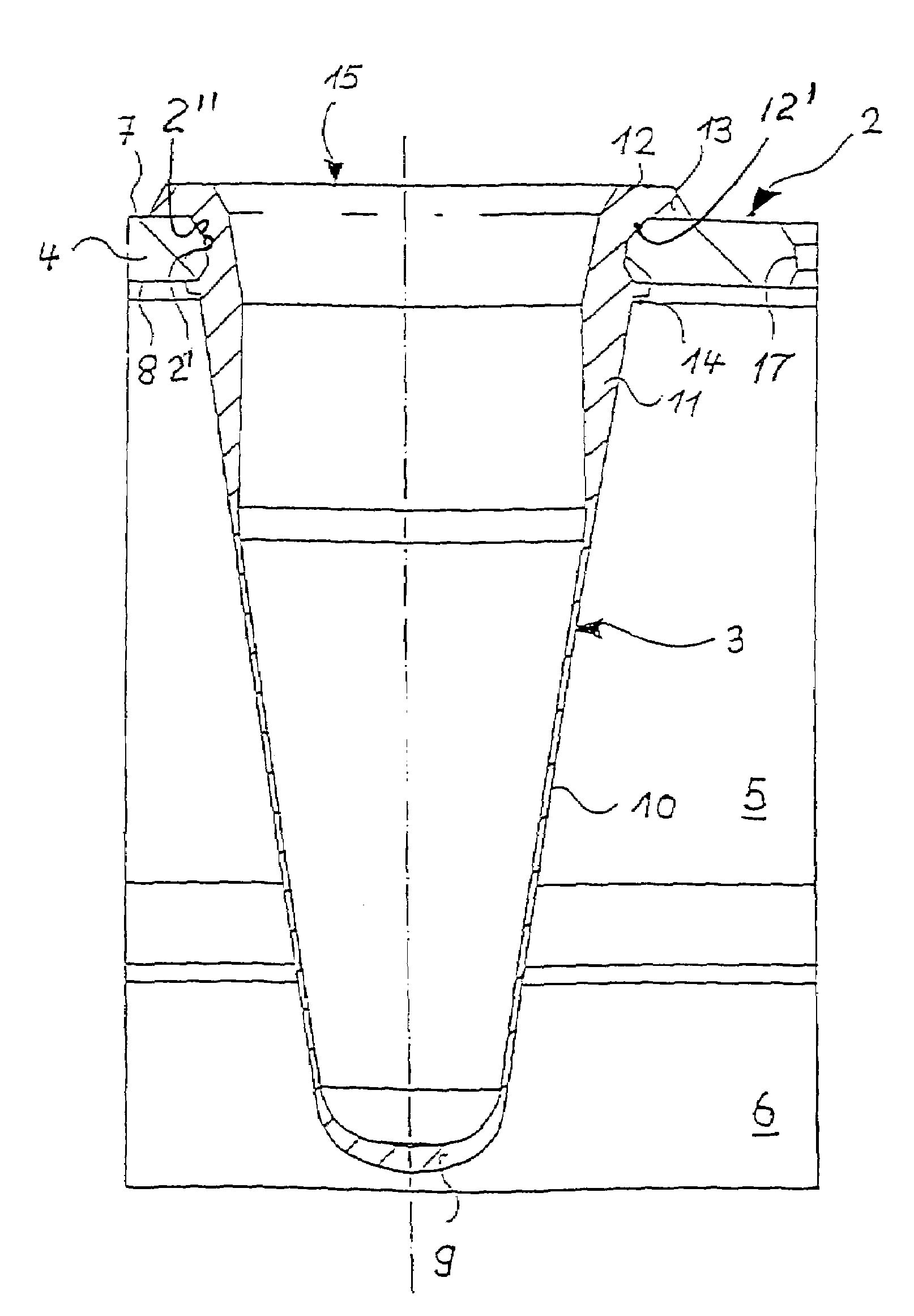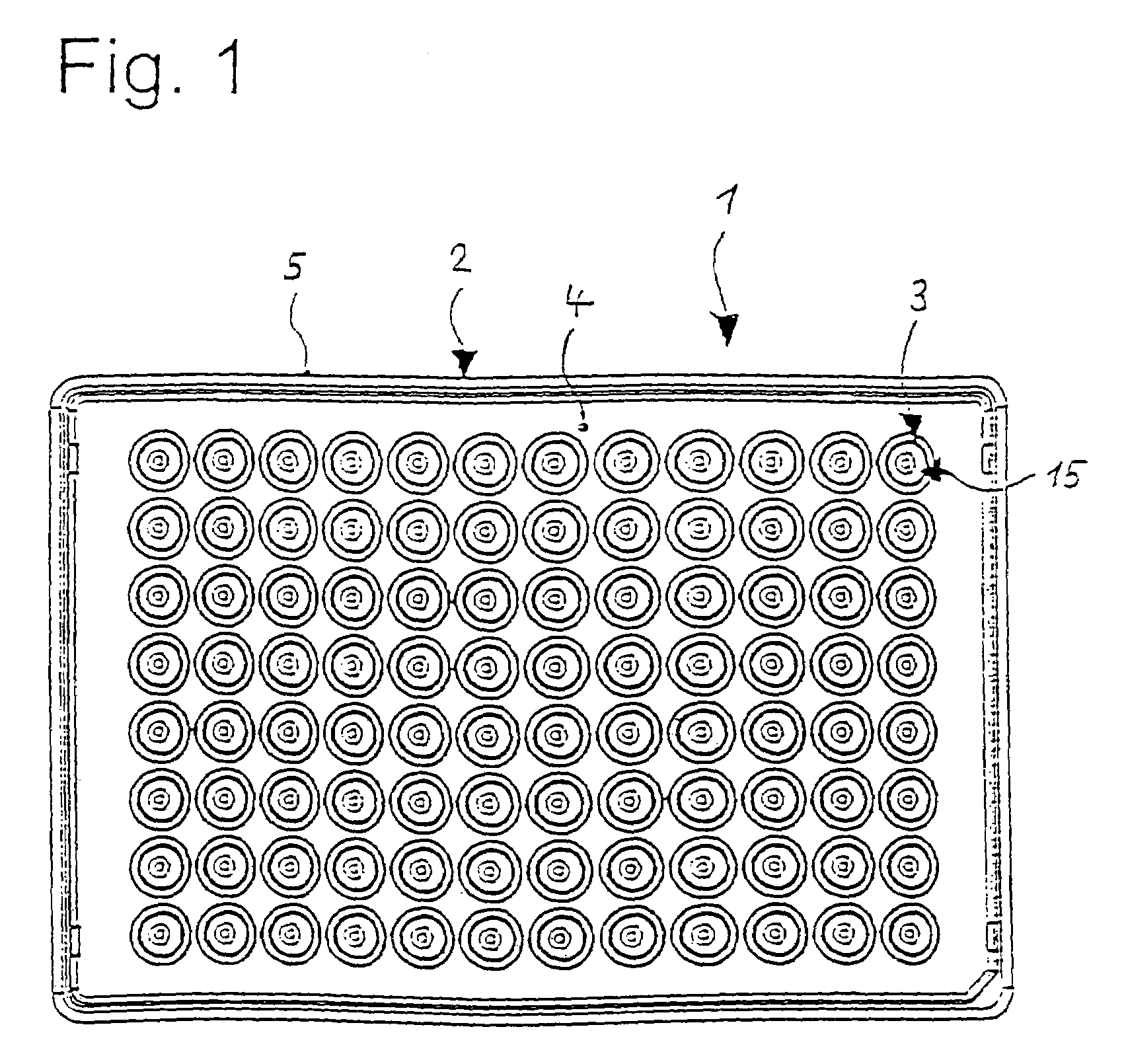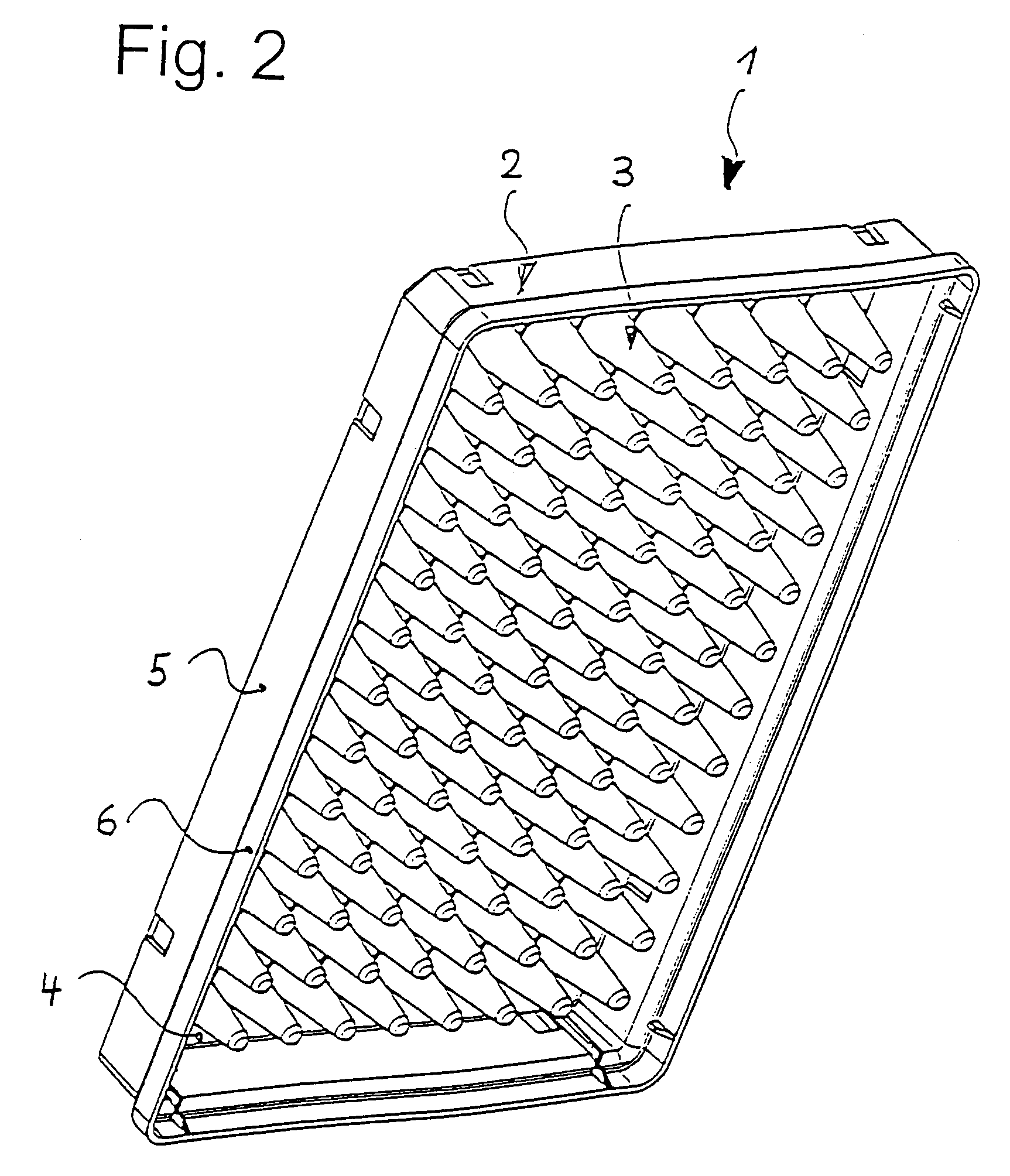Microtitration plate
a microtitration plate and plate body technology, applied in the field of microtitration plates, can solve the problems of unsuitable pcr or oxygen supply, and achieve the effects of improving the wall thickness, not impairing the dimensional stability of the microtitration plate any longer, and low tolerances
- Summary
- Abstract
- Description
- Claims
- Application Information
AI Technical Summary
Benefits of technology
Problems solved by technology
Method used
Image
Examples
Embodiment Construction
[0041]In the drawings, the same elements are designated by identical reference numerals. The description pertaining thereto applies to all of the embodiments.
[0042]Referring to FIGS. 1 through 3, a microtitration plate 1 comprises a frame 2 and a multiplicity of vessels 3. There is a total of 96 vessels arranged in eight columns and twelve rows.
[0043]The frame 2 has a substantially rectangular plate 4 the outer edge of which is surrounded by a bordering 5 which protrudes approximately perpendicular from the underside of the plate 4, i.e. beyond the vessels 3. At bottom, the bordering 5, as is known, has an expansion 6 which enables stacking on the upper surface of an appropriate microtitration plate 1.
[0044]The frame 2 has a total of ninety-six holes 2′ in the plate 4. These have a profile 2″ of the cross-section which widens towards the upper surface 7 of the plate 4 in two portions of different conicity and towards the underside 8 of the plate 4 in a conical portion.
[0045]In a fir...
PUM
 Login to View More
Login to View More Abstract
Description
Claims
Application Information
 Login to View More
Login to View More - R&D
- Intellectual Property
- Life Sciences
- Materials
- Tech Scout
- Unparalleled Data Quality
- Higher Quality Content
- 60% Fewer Hallucinations
Browse by: Latest US Patents, China's latest patents, Technical Efficacy Thesaurus, Application Domain, Technology Topic, Popular Technical Reports.
© 2025 PatSnap. All rights reserved.Legal|Privacy policy|Modern Slavery Act Transparency Statement|Sitemap|About US| Contact US: help@patsnap.com



